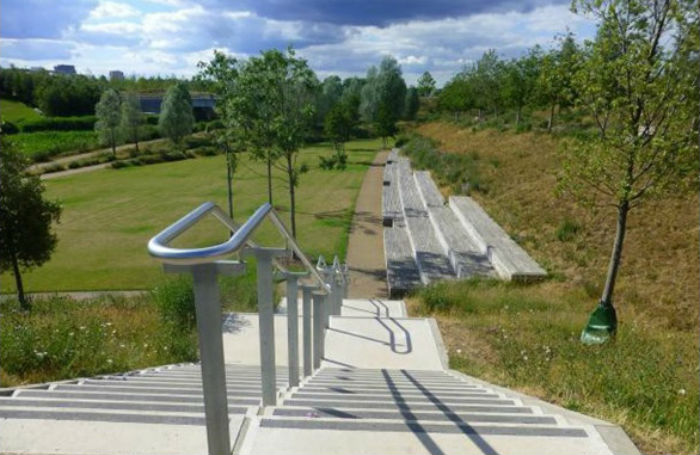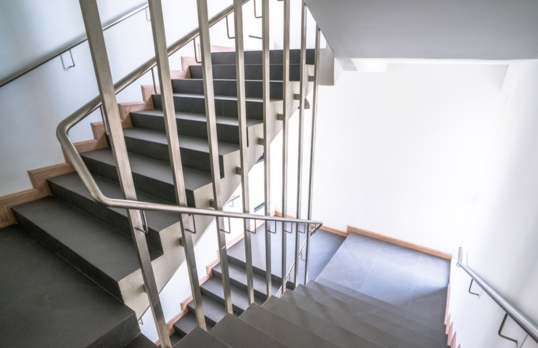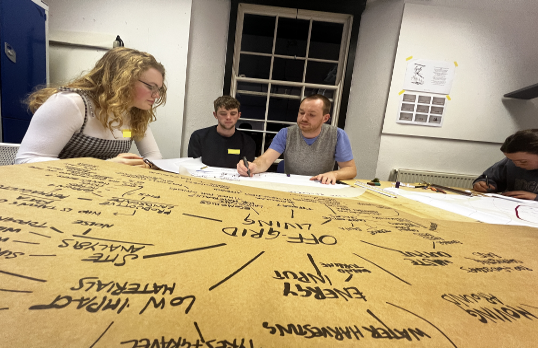The UK is recognised as a world leader in inclusive design with some of the best guidance available. The ‘bible’ for practitioners has been the landmark British Standard BS 8300, which offers best practice guidance on making buildings accessible and welcoming to disabled people.
The whole point of BS 8300 is that it offers design solutions that go beyond statutory planning and Building Regulations’ requirements.
While another UK inclusivity landmark, the 2010 Equality Act (and its predecessor the 1995 Disability Discrimination Act), makes discrimination against disabled people illegal, it does not set out how this can be physically achieved through building design and standards.
BS 8300 offers the technical guidance recommendations that makes it happen, going way beyond simple ramps and rails to offer comprehensive design solutions for a whole range of disabled access scenarios. It is a major design resource.
Strategic Access Adviser Julie Fleck, advises architects that inclusive design should not mean telling the client that a project meets minimum legal requirements, but that it is BS 8300 compliant, although the best practice approach of addressing inclusive design issues at the outset of a project is not just about meeting standards.
Yet seven years after the publication of BS 8300, there are signs that some of the momentum behind the push for inclusive design that was seen after legislation, and again after the huge success of the 2012 Olympic and Paralympic Games and its showcase Queen Elizabeth Olympic Park, is being lost.

How many designers routinely use BS 8300? There is anecdotal evidence that a lot of designers, including those that want to deliver inclusive design, are not and are relying on piecemeal approaches to deliver what they think will meet Equality Act requirements.
‘It’s clear that there are some obstacles to progress. Some clients are persuaded and are on board, but others are not. There is an appreciation that a lot of architects and designers want to do their best to meet inclusivity standards, but then they might face a client that wants to design things out and cover the legal minimum,’ says Julie.
Cost is usually an issue, of course, not just for clients, but also for small practitioners – the cost of purchasing the code of practice (BS 8300:2009+A1:2010) is £240 (half price for BSI members), whereas national planning guidance and Approved Documents are available for free. There are calls to have the standard digitised, but there would still be a cost.
Education and training of clients and consultants is seen as key to broader take-up of inclusive design. There is a pan-industry initiative underway, the Built Environment Professional Education project (BEPE), which is part of the Olympic and Paralympic Legacy Programme.
Its aim is to make inclusive design business as usual for all development projects, and after being initially supported by the government and the Greater London Authority it is in the process of being adopted by organisations across the industry.
Most of the key professional institutions are supporting BEPE, including the RIBA and the Chartered Institute of Architectural Technologists, and have been considering how to make core skills in inclusive design a mandatory part of their members’ education and training, and part of any assessment of professional competence.
The Architects Registration Board has agreed to consider adding inclusive design to the threshold standards for entry on to the Register when the Criteria at Parts 1, 2 and 3 are reviewed. Once the criteria have been reviewed, RIBA will itself review the validation procedures and the process is not expected to complete before 2018.
Julie, who was responsible for developing the London Plan policies on inclusive design and contributed to the development of the Olympic Delivery Authority’s award-winning Inclusive Design Strategy and Standards, is currently the BEPE Project Lead at the Construction Industry Council (CIC), which has taken up the BEPE baton on behalf of the industry. She is confident that inclusive design will become a mandatory part of an architects’ training over time.
In the meantime the RIBA continues to facilitate CDP training on inclusive design and has made it one of the ten mandatory, yearly CPD Core Curriculum topics.
Next year will see the publication of a revised BS 8300, and a new second part covering public spaces rather than building access. Hard-pressed small practices would do well to look out for the draft consultation standard that should be made (freely) available for consultation purposes and get up to date.
One of the best online resources for inclusive design is the Design Council CABE Inclusive Design Hub, where architects can also share their own case studies and examples of best practice.
With thanks to Julie Fleck OBE, BEPE Project Lead at the Construction Industry Council, who gave the presentation ‘Are You an Inclusive Designer?’ on CPD day at the RIBA Guerrilla Tactics event on 9 November 2016.
Text by Neal Morris, © RIBA









